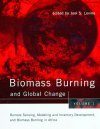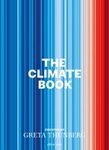About this book
The 1989 report of the National Research Council, Global Change and Our Common Future states: "Our planet and global environment are witnessing the most profound changes in the brief history of the human species. Human activity is the major agent of those changes - depletion of stratospheric ozone, the threat of global warming, deforestation, acid precipitation, the extinction of species, and others that have not become apparent". One human activity that leads to all of these global changes is the burning of the world's living and dead vegetation. And human-initiated biomass burning has increased significantly over the last century. "Biomass Burning and Global Change" assesses the impact of biomass burning as a driver for global change. The two volumes bring together the results of a climatic research project in over 80 contributions by more than 200 scientists representing a dozen different countries. The contributions are divided into the tropical, temperate and boreal regions of the world, and many of the contributors are from countries where burning is widespread. All aspects of biomass burning are covered - from fire ecology to atmospheric chemistry and climate. Topics include the remote sensing of fires from space, the characteristics and ecology of fire, gaseous and particulate emissions from burning, and the impact of these emissions on the chemistry of the troposphere and stratosphere and on global climate. There are also results of national and international experiments on biomass burning, including the international South African Fire-Atmosphere Research Initiative (SAFARI) and Bor Forest Island Experiement in Siberia, part of the Fire Research Campaign Asia-North (FIRESCAN), and the US Smoke, Clouds and Radiation (SCAR) experiment. Several chapters deal with the Kuwaiti oil fires and their environmental impacts.
Contents
Introduction, Joel S. Levine. Part 1 Remote sensing - global and a regional scales: Mission to planet Earth - land-cover/land-use change program, Anthony C. Janetos et al; Developing a global vegetation fire monitoring system for global change studies - a framework, Jean Paul Malingreau, Jean-Marie Gregoire; AVHRR monitoring of vegetation fires in the tropics - toward the development of a global product, Alberto w. Seltzer, Jean Paul Malingreau; The simulation of AVHRR data for the evaluation of fire-detection techniques, Pete Dowty; FireSat and the global monitoring of biomass burning, Joel S. levine et al. Part 2 Modelling and inventory development - global and regional scales: Estimates of biomass density for tropical forests, sandra Brown, Greg Gaston; Land-use practices and biomass burning - impact on the chemical composition of the atmosphere, Claire Granier et al; Modelling the influence of vegetation fires on the global carbon cycle, Frank Mack et al; Black carbon, the global carbon cycle, and atmospheric carbon dioxide, Thomas a.J. Kuhlbusch, Paul J. Crutzen; Biomass burning and the production of carbon dioxide - a numerical study, Alexis D. Kambis, Joel S. Levine; A study of the mass transport of enhanced continental ozone in the tropics and its impact over remote southern Atlantic Ocean, Jennifer Richardson Olson; Biomass burning smoke in the tropics - from sources to sinks, Krista, k. Laursen, Lawrence F. Radke; The development of a global biomass burning inventory, Darrell Wayne Sproles. Part 3 Biomass burning in Africa: Satellite monitoring of vegetation fires on a multiannual basis at continental scale in africa, Brigitte Koffi et al; Use of the Earth observation system in the space shuttle program for research and documentation of global vegetation fires - a case study from Madagascar, Johann G. Goldammer et al; Chlorine and bromine in the biomass of tropical and temperate ecosystems, Lisa M. McKenzie et al; Carbon, hydrogen, nitrogen, and thermogravimetric analysis of tropical ecosystem biomass, Ronald A. Susott et al; Biomass burning in the savannas of southern Africa with particular references to the Kruger National Park in South Africa, Winston S.W. Trollope; Contribution of the spread-fire models in the study of savanna fires, Micheline Moula et al; Trace gas and aerosol emissions from savanna fires, Meinrat O. Andreae et al; regional trace gas distribution and air mass characteristics in the haze layer over southern Africa during the biomass burning season (September/October 1992) - observations and modelling from the STARE/SSFARI-92/DC3), Thomas Zenker et al. (Part contents)
Customer Reviews
Biography
Joel S. Levine is Senior Research Scientist in the Atmospheric Sciences Division, NASA Langley Research Center and is the Principal Investigator of NASA's research program on global biomass burning, Biospheric Research Program, Office of Space Sciences and Applications.



































